Styloglossus
The styloglossus, the shortest and smallest of the three styloid muscles, arises from the anterior and lateral surfaces of the styloid process near its apex, and from the stylomandibular ligament.
| Styloglossus | |
|---|---|
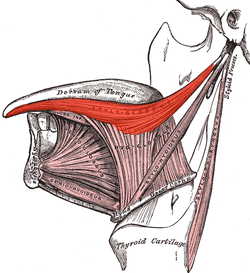 Extrinsic muscles of the tongue. Left side. (Styloglossus XII visible at center top.) | |
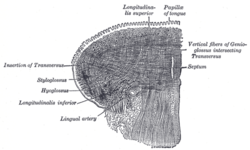 Coronal section of tongue, showing intrinsic muscles. (Styloglossus labeled at center left.) | |
| Details | |
| Origin | Styloid process of temporal bone |
| Insertion | tip and sides of tongue |
| Artery | sublingual branch of the lingual artery. |
| Nerve | Hypoglossal nerve (CN XII) |
| Actions | retraction and elevation of tongue |
| Identifiers | |
| Latin | musculus styloglossus |
| TA | A05.1.04.105 |
| FMA | 46692 |
| Anatomical terms of muscle | |
Passing inferiorly and anteriorly between the internal and external carotid arteries, it divides upon the side of the tongue near its dorsal surface, blending with the fibers of the longitudinalis inferior in front of the hyoglossus; the other, oblique, overlaps the Hyoglossus and decussates with its fibers.
Innervation
The styloglossus is innervated by the hypoglossal nerve (CN XII) like all muscles of the tongue except palatoglossus which is innervated by the pharyngeal plexus of vagus nerve (CN X).
Action
The styloglossus draws up the sides of the tongue to create a trough for swallowing. As a pair they also aid in retracting the tongue.
Additional images
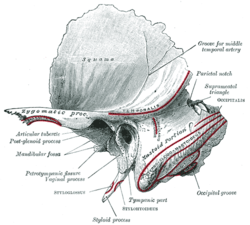 Left temporal bone. Outer surface.
Left temporal bone. Outer surface.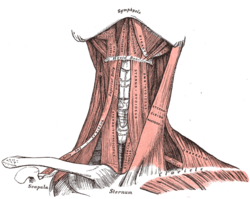 Muscles of the neck. Anterior view.
Muscles of the neck. Anterior view. The internal carotid and vertebral arteries. Right side.
The internal carotid and vertebral arteries. Right side.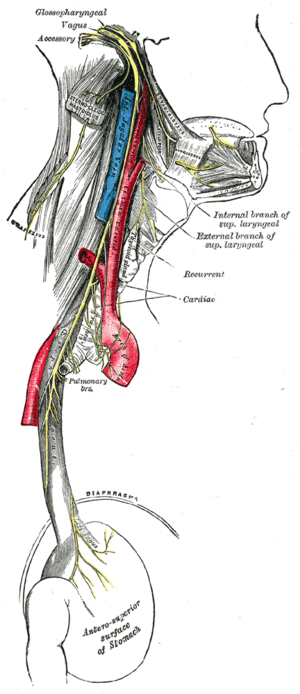 Course and distribution of the glossopharyngeal, vagus, and accessory nerves.
Course and distribution of the glossopharyngeal, vagus, and accessory nerves.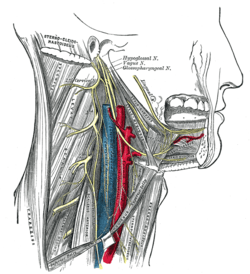 Hypoglossal nerve, cervical plexus, and their branches.
Hypoglossal nerve, cervical plexus, and their branches.- Styloglossus muscle
- Styloglossus muscle
- Styloglossus muscle
- Styloglossus muscle
References
This article incorporates text in the public domain from page 1130 of the 20th edition of Gray's Anatomy (1918)
External links
- "Anatomy diagram: 25420.000-1". Roche Lexicon - illustrated navigator. Elsevier. Archived from the original on 2014-01-01.